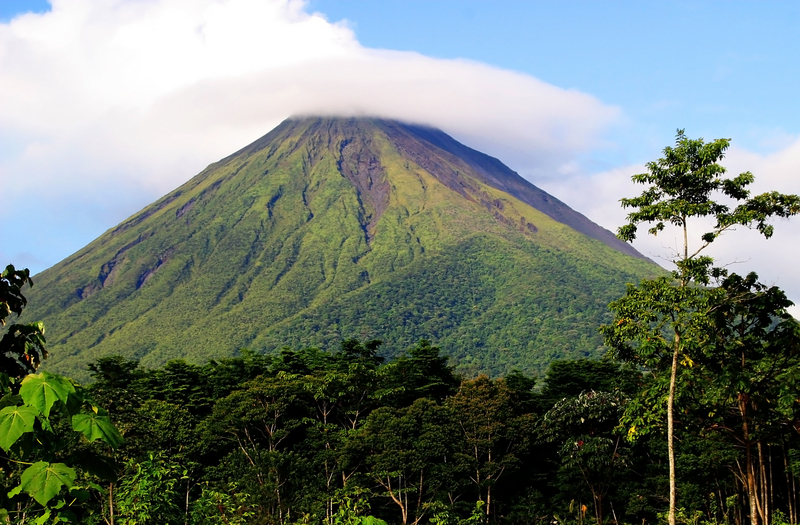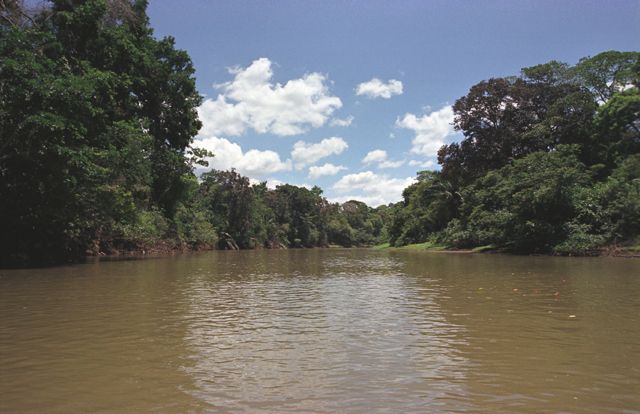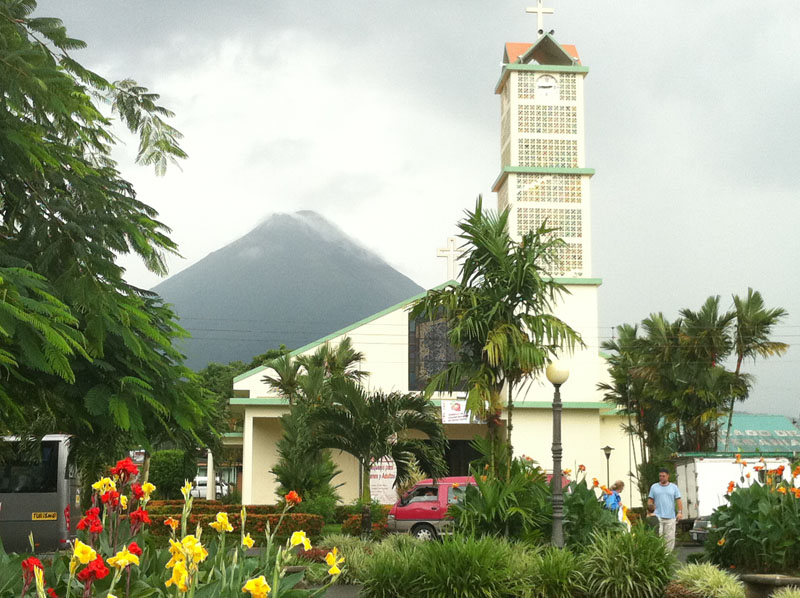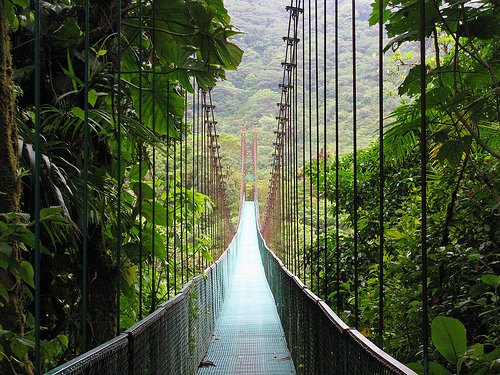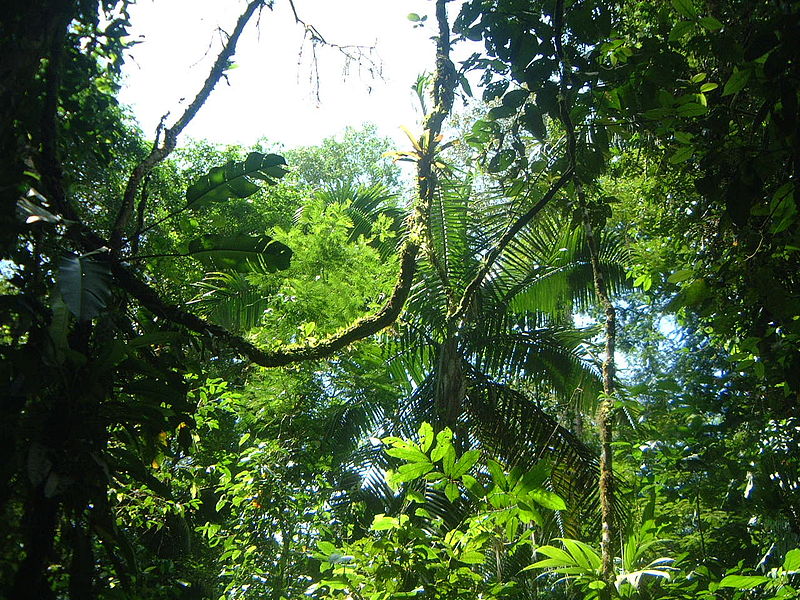Nestled in the Northern Lowlands of Costa Rica’s lush landscape, in a protected area known as the Arenal Tilaran Conservation Area, lies the Tenorio Volcano National Park. Four volcanic peaks stand amidst the jungles, giving the park its name. The Rio Celeste, literally translated to “The Light Blue River,” runs through the park, with majestic cascades along the way for hikers and tourists alike to enjoy. The Rio Celeste is turned its opulent blue from the volcanic sulfur that infuses the area, but local legend insists that it was turned this shade by the paint brushes used by the gods to paint the skies.
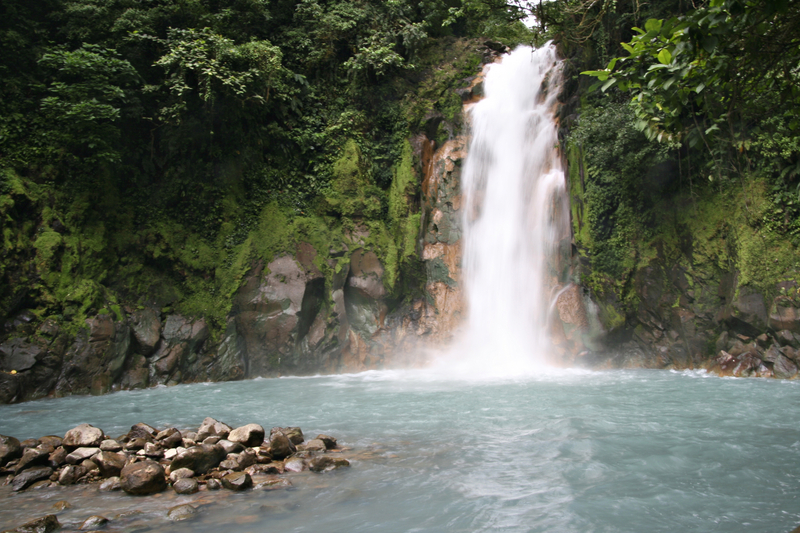 Just about a two day hike out of La Fortuna, in the Guanacaste Province, the park is easily accessible via the route to Guatuso. Paid tours are now abundant for the region, as Tenorio Volcano National Park has grown in popularity recently. Tours will take you through the park along the river, to view the magnificent Celeste waterfall or to a number of natural hot springs and picnic sites that are conveniently positioned throughout the park. There are also swimming spots accessible to visitors along some of the short trails.
Just about a two day hike out of La Fortuna, in the Guanacaste Province, the park is easily accessible via the route to Guatuso. Paid tours are now abundant for the region, as Tenorio Volcano National Park has grown in popularity recently. Tours will take you through the park along the river, to view the magnificent Celeste waterfall or to a number of natural hot springs and picnic sites that are conveniently positioned throughout the park. There are also swimming spots accessible to visitors along some of the short trails.
Camping is not allowed in the park unless you are making your way to the top of the main volcanic peak. The summit is a day’s hike and the crater is quite a site to see.
Driving routes to the park vary. From nearby San Jose, tourists can take the main motorway toward San Carlos and on to Upala; from that point is about thirty miles to the park entrance. You may also take the Inter- American Highway toward Canas and turn toward Bijagua about six miles in; from Bijagua the park is about twenty miles out.
Paid tours can cost between twenty five and sixty five dollars, but prices fluctuate often in this part of the country. In nearby major towns, like La Fortuna and San Jose, rental cars can be procured. It is often recommended that you spring for the four- wheel drive, especially in the rainy season. The roads can be treacherous and steep if you are driving. It also may be a good idea to pack your own lunch when you are on the road toward the park. There are several stops along the way, but they are far between.
Overall the spot is great for hiking, and there is a ranger center available during the daylight hours for tourists to stop and get water or first aid. The trip can be relatively inexpensive, and more importantly—great fun!


